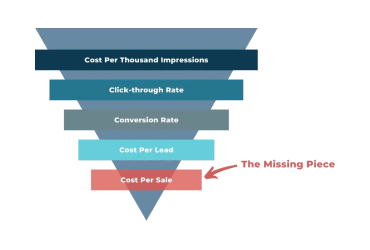Guide on how to reduce cost per lead
Digtective’s guide on how to reduce your cost per lead
So far, Digtective has tracked over seven hundred and twenty thousand leads! Therefore, we thought that it would be a good idea to share some of the many lessons that we have learned. This is our ultimate guide on how to reduce your cost per lead (CPL), or rather, cost per sale. It is time for you to stop wasting your money now!
Case Study
First, we would like to tell you about one of our clients, the loan broker Zen Finans. They used the “Digtective” method for April 2021 to April 2022 with extraordinary results. Here are some of the figures:
- Increased the number of leads by 84%
- Reduced price per lead by 86%
- Reduced cost per paid-out loan by 86%
This could be you!
Here you can read the case study:
How Zen Finans Reduced Cost per Lead by 86% with Digtective
Let’s take a look at how you can achieve results just like these.
Insert the missing piece
Stop looking at cost per conversion, this is not the right metric!
Start looking at cost per sale by attributing this to the exact source, i.e, the ad or link that referred to the lead. Cost per click and click-through rate are both nice figures, but we are looking for high-quality leads! It is only then that you will accomplish extraordinary results!
Dedicate time to Analyzing your data
You need to spend time on your analytics tools. Most of you spend almost no time analyzing your data. You look at an ad campaign to see how much you spend and what you earn and then determine if the campaign is profitable.
However, what you should be doing is granulating the data down to each individual ad to determine whether the individual ad and its message are making money.
A Google Ads account contains anything from a couple of ads to several thousand. Is it enough to look at your Google Ads and say that it works based on how many leads you generate from them?
Most of our customers cut around 50% of their ads when they look at individual ads instead of looking at Google as one single source. They achieve the best results when they reallocate the ad spend to profitable ads, increasing the number of quality leads and, at the same time, reducing their CPL.
Next, start analyzing the ads that are working; can you find some text or message that works better than others? If that is the case, can you use it in other ads so that they also become profitable? Google is a fantastic source to gain insight into which messages your customers react to with the intent to buy.

Keep track of the ads that are losing money
Do you want to see data on the ads that are losing money? Well, then you have to connect your ads with your revenue metrics.

You probably have an analytics tool today (Google Analytics), but these tools are however rarely connected with your income metrics if you have what is called an offline conversion.
Maybe someone in the IT department can help you tie the data together? Just be careful so you don’t upload any personal data to Google or Facebook in the process. If you were to be so unlucky, you would be in breach of GDPR. Here is a link to Facebook around GDPR for you as an advertiser: Facebook on GDPR
In short, you are responsible for how you handle GDPR!
Offline conversion
An offline conversion is a delayed conversion for a product or service. A typical example is a form submission that has to be handled manually by a salesperson, account manager or similar.
Here is an example of a typical flow:

One of the biggest challenges with offline conversions can be that your systems are not connected to each other, which results in you not being able to compare actual revenue data with relevant marketing costs.
A submitted form most likely collects an offline conversion to your CRM system with manual handling. The sales process can be very long, meaning a sale can be registered several months later. This means that it can take everything from hours to months before any revenue is earned.
The problem for many companies is that in the long and manual sales process, the origin of the lead (the specific ad from which it originated) gets lost. This is very valuable data for you as a marketer to determine which specific ads and messages are most profitable. This is where Digtective comes in, connecting your leads to your sales so that you don’t lose this valuable data! Don’t stop at leads, track your cost per sale!
Track everything
Don’t just track paid advertising. Your SEO is also really important to track since you spend either a lot of money or time on it. Here is a report from one of our customers showing Google organic search with income:

Digtective also tracks the referrer from all your traffic so you can see all your income earned from free links!
The right way to track is to track everything!
This means that you should track all your digital marketing, all links and all organic posts on social media.
Want to take your tracking even further?
Get in touch!



